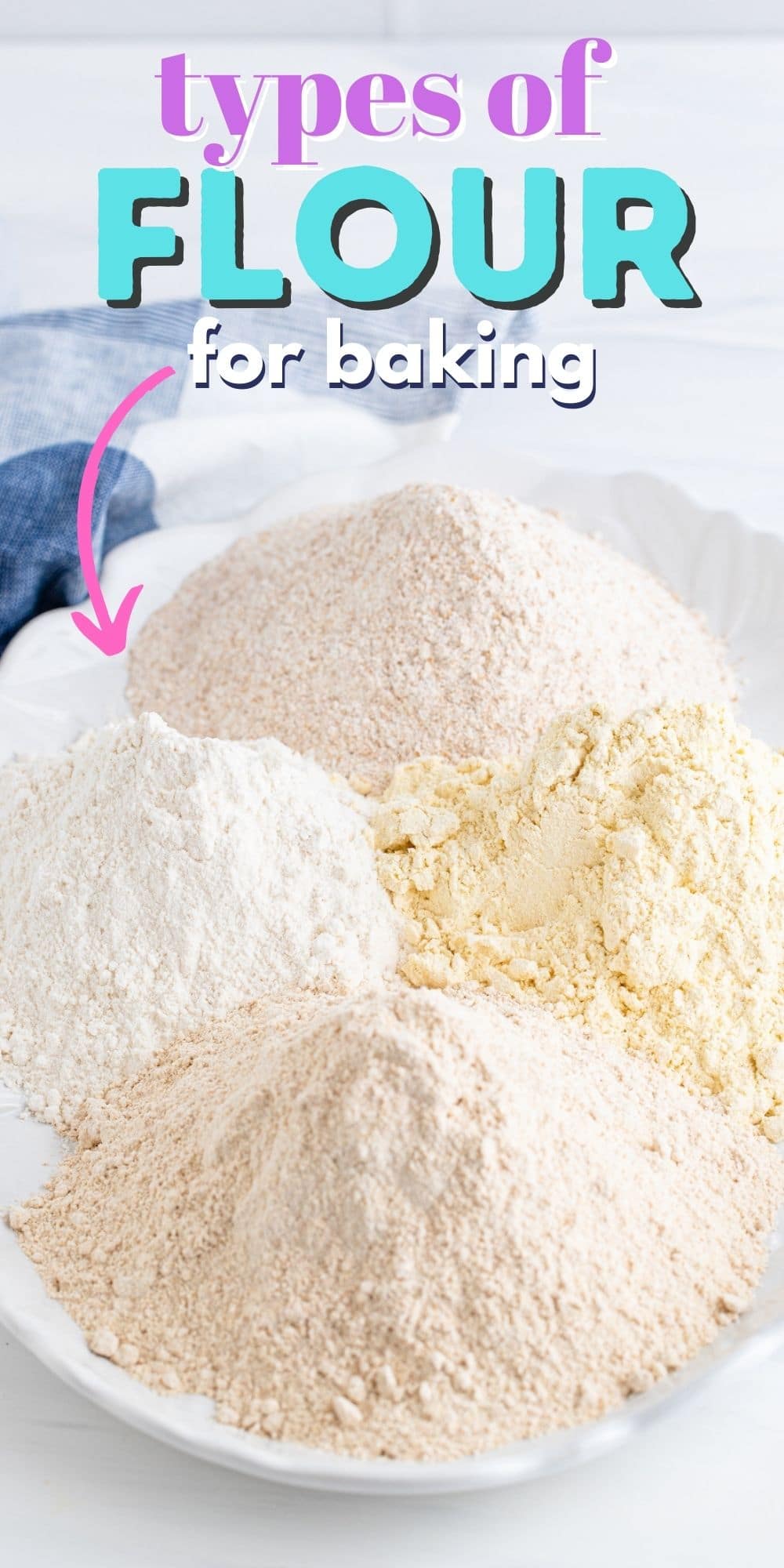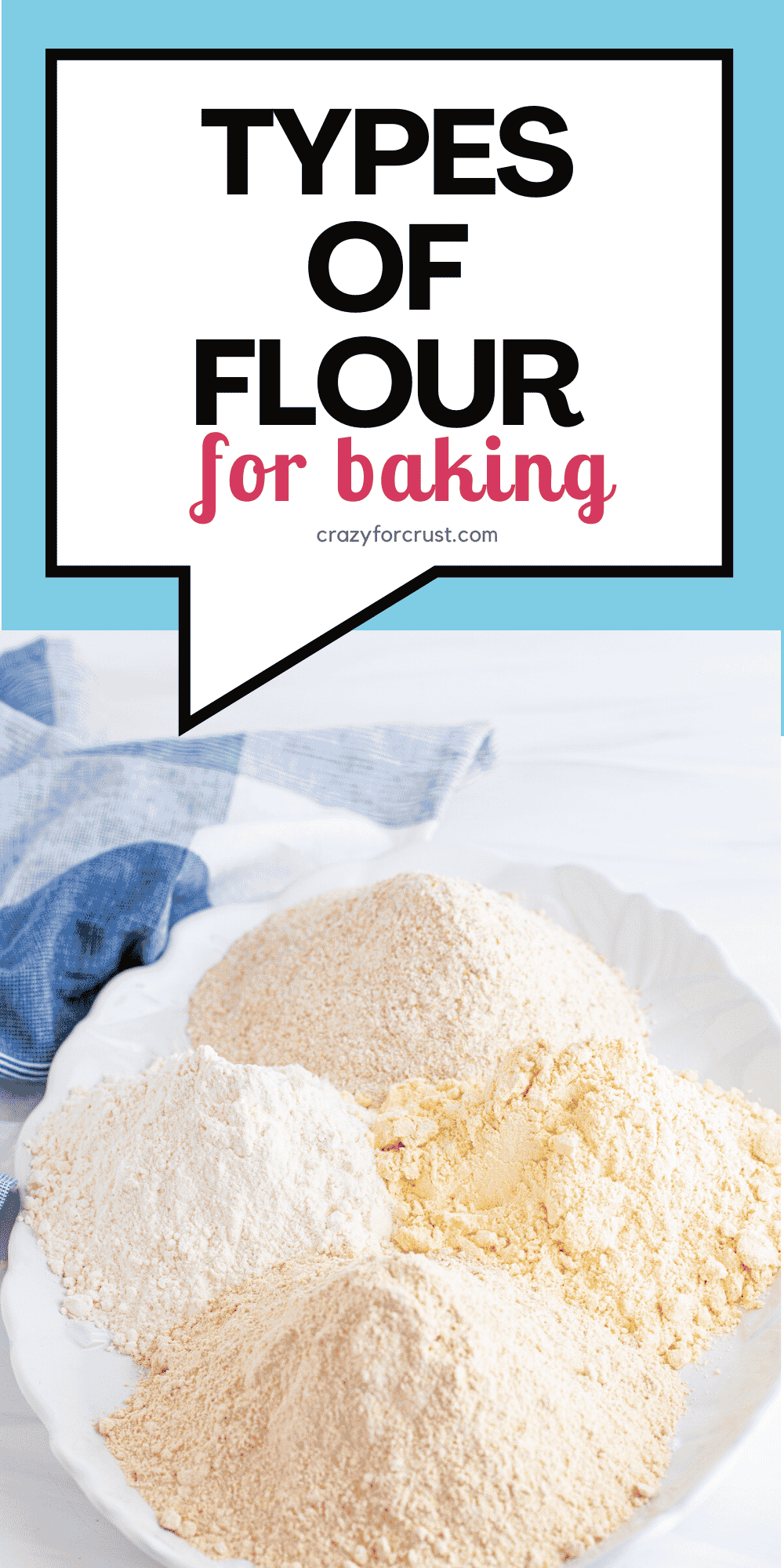This post may contain affiliate links. For more information, read my disclosure policy.
Learn about the different types of flour for baking! In this post, I’m covering six common types of baking flour, what they’re used for, and how you can substitute them in recipes. Learn about different types of wheat flour and why they’re important.
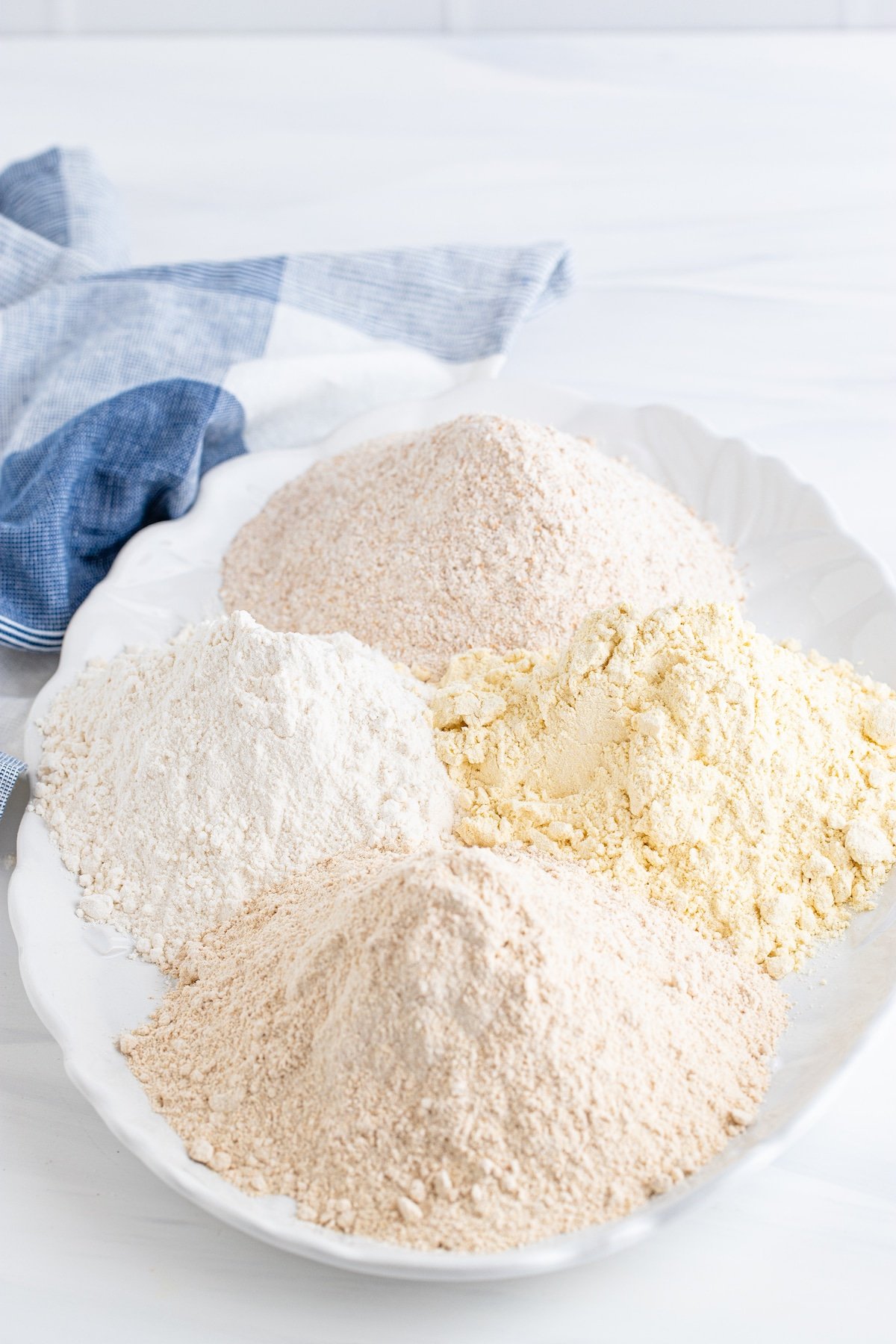
Table of Contents
Why learn about all the types of flour?
If you want tender baked goods you need to know all about wheat flours and which one to use. I get lots of reader questions about the difference between flours and substitutions. Consider this your guide! I hope to clear up the confusion and answer all of your questions.
Protein content is what differentiates flours. The more protein flour has, the more gluten it has. Gluten refers to a flour’s strength, so each kind of flour has a different gluten amount or “strength.”
When gluten is developed, it gives whatever you’re making structure. So, the more you work the flour (i.e., mixing, kneading, etc.), the stronger the gluten will be. Depending on what you’re making, gluten plays a huge part in how light, fluffy, chewy, or dense your baked goods will be.
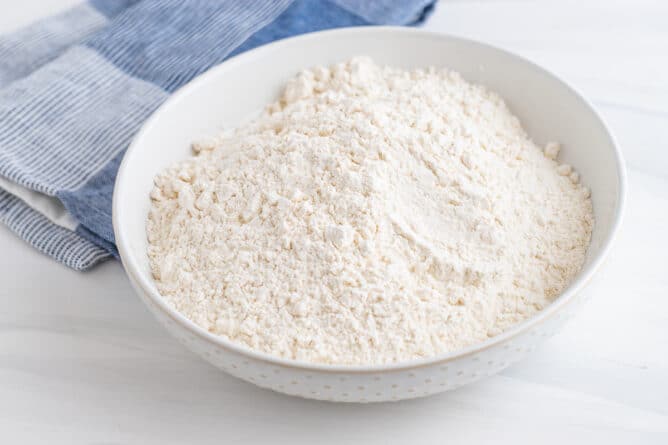
All-Purpose Flour
Our old friend, AP! I’d bet money that pretty much all of us have some all-purpose flour on hand all the time. I know I do – it’s my go-to.
The best way to describe it is “middle of the road.” If you put all the different types of flour in order of protein amount, AP flour would be in the middle. It gets its name because it really is all-purpose. You can use it to make … so many things.
There are two types: bleached and unbleached. Unbleached flour is allowed to turn white naturally when it’s processed. With bleached flour, this process is done with chemicals to speed it up. You can use them interchangeably in recipes, with the only difference is bleached flour is softer than unbleached.
- 10-12% protein
- Best for: Really anything! Cookies, Brownies, Pancakes, Muffins, Quick Bread
- Popular Brands: Pillsbury, Gold Medal, King Arthur, and Bob’s Red Mill are the most popular.
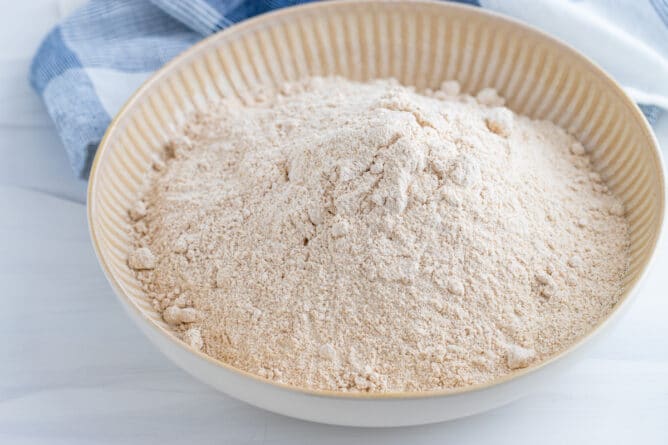
Whole Wheat Flour
Whole wheat flour is often used in bread making, but there are tons of recipes for whole wheat muffins, cookies, and quick breads.
The big difference with whole wheat flour is that nothing is removed in the processing. Unlike all-purpose flour and wheat flour, the entire wheat kernel is processed. This gives the flour a grainer texture as well as more nutrients. It’s also made from a different kind of wheat, which gives it a darker color.
Whole wheat flour is a strong flour with more protein than all-purpose flour. Because of that, it’s a popular flour for making bread but not for cakes, which are best when they have a tender light crumb.
- 11-15% Protein
- Best for: Bread, Pasta, Pizza Dough, Cookies, Quick Bread. (I prefer using half and half whole wheat flour and AP flour in recipes like my healthier banana bread.)
- Brands: Pillsbury, Gold Medal, King Arthur, and Bob’s Red Mill and more
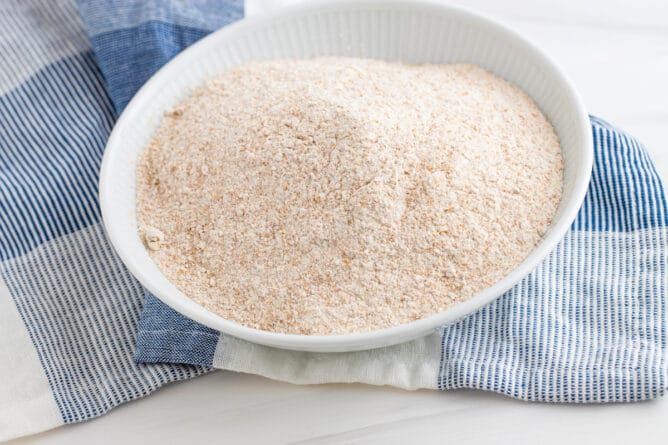
White Whole Wheat Flour
The only difference between white whole wheat flour and whole wheat is the type of wheat used to make it. Whole wheat uses red wheat, which gives it a darker color. White whole wheat is made with lighter colored wheat. Hence, its name!
It’s made the same way, too, by processing the whole kernel. Flavor-wise, it’s a little less nutty than whole wheat, and whatever you are making will be lighter in color. Just like whole wheat, you can find several different brands at the store.
- 11-13% Protein
- Best for: Muffins, quick breads, cookies and more
- Brands: King Arthur, Pillsbury, store brands and more
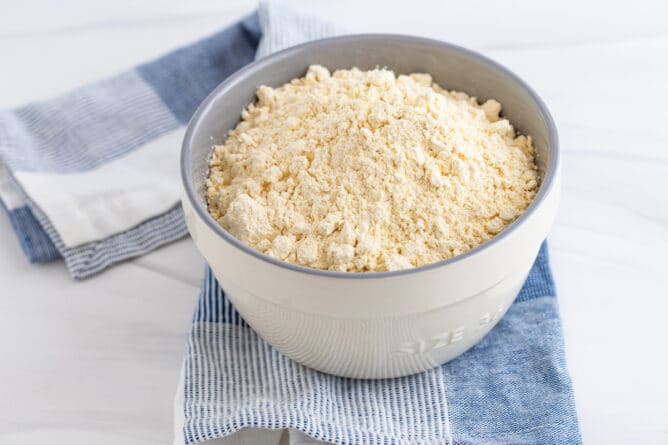
Gluten Free Flour
There are all kinds of gluten-free flours available, but my go-to is Bob’s Red Mill gluten-free 1:1 all purpose flour.
In general, gluten-free flour is a type of flour that has no gluten. In other words, it’s not made with wheat and, instead, is a combination of alternative flours like rice flour, potato flour, and other ingredients that make it work like regular flour. For people who can’t eat gluten, it’s a great thing.
I like Bob’s Red Mill gluten-free 1:1 AP flour because you can use it just like you would all-purpose flour. It’s a 1:1 substitution making it easy to swap in recipes.
- Protein varies between brands because the different flours used to make the AP flour have different amounts.
- Best for: cookies, cupcakes, muffins, quick bread, and cakes. It’s not great for making bread – Bob’s Red Mill has another type of flour they recommend for that.
- Brands: Bob’s Red Mill, Pillsbury, generic, store brands, etc.
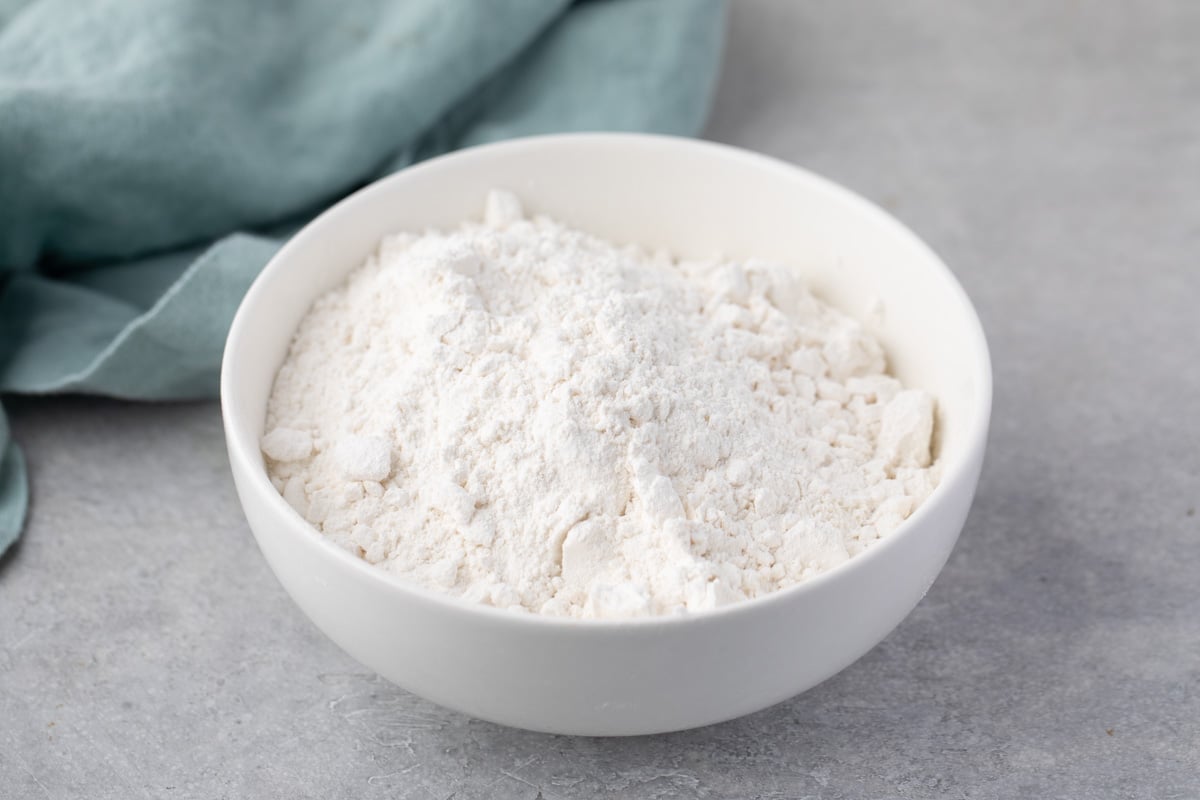
Cake Flour
If whole wheat flour is on the high end of protein content, cake flour is on the opposite end: it has the lowest protein count. Cake flour is soft, fine, and most often use to make – you guessed it – cakes.
Less protein means less gluten, which means soft, tender cakes when you use cake flour. If light and fluffy is your goal, this is the flour to use.
- 5-8% Protein
- Best for: Cakes
- Brands: Swans Down, King Arthur Flour, Pillsbury, and Bob’s Red Mill are the common brands of cake flour you’ll find at the store.
- Substitute for cake flour: I have a whole post about it, including how to make cake flour using all-purpose flour. If you don’t use it often, it’s a great hack to know. It saves a trip to the store!
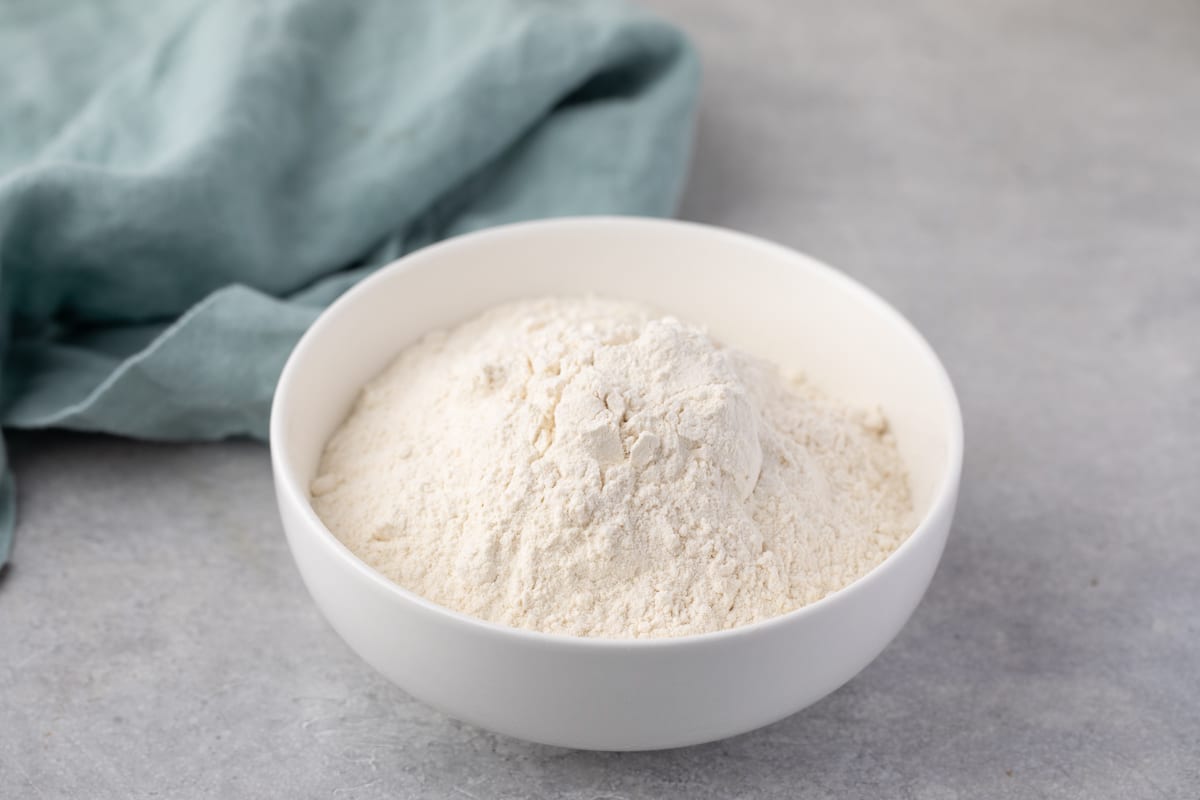
Bread Flour
Bread flour has more protein than all-purpose flour, which creates more gluten, giving your breads and pizza dough that classic chew.
- 11-13% Protein
- Best for: Pizza dough and yeasted breads
- Brands: Pillsbury, Gold Medal, King Arthur, store brands and more
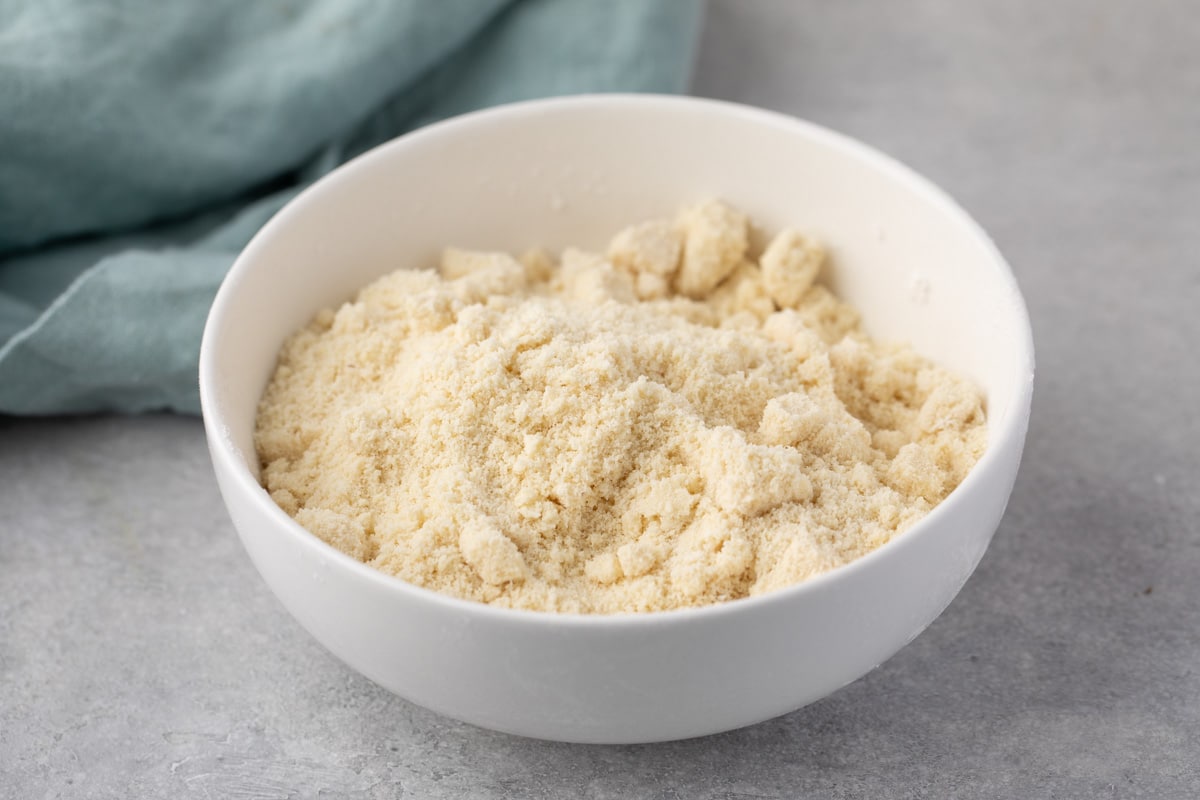
Alternative Flours
There are many alternative flours nowadays and more show up every time I’m at the store. These flowers are used a lot in gluten-free baking as well as for low-carb or keto diets, or for diabetic cooking. Some of these flours include: Almond (pictured), Coconut, Oat, Spelt, Buckwheat, Chickpea, Quinoa and more.
- Protein varies depending on flour source
- Best for: Keto or gluten-free baking with a combination of other ingredients needed for success
- Brands: Bob’s Red Mill, King Arthur Flour, store brands and more. You’ll often find more of a selection of these flours at specialty stores or more organic grocers like Sprouts or Whole Foods (or on Amazon).
How to substitute flour
Keep in mind that any time you change a recipe, you might not get your desired result. Well written recipes should always specify the kind of flour to use. Making substitutions is always a risk, so just be aware. Oh, and always use the spoon and level method to measure your flour. Even better? Use a kitchen scale if weighted amounts are included in the recipe.
All-Purpose Flour Substitutes: Remember that AP flour is a middle of the road flour when it comes to protein or strength. So, substituting it with something else will depend on what you’re making. If it’s a loaf of bread, you can sub whole wheat or white whole wheat flour, but you will want to add a little less. If it’s a cake or cupcakes, you can substitute cake flour. If you’re going to swap it for gluten-free flour, go with gluten-free 1:1 AP flour.
Whole Wheat and White Whole Wheat: Again, it depends on what you’re making. Technically, if it’s bread, you can use all-purpose flour or bread flour, but the texture won’t be the same. If you are using whole wheat to make muffins or quick bread, you can sub all-purpose flour. Just keep in mind the texture and flavor won’t be the same.
Gluten-Free 1:1 AP Flour: The easiest swap is with all-purpose flour. I use these interchangeably a lot, especially for events. I’ll make one batch of cookies with all-purpose and a second batch with gluten-free flour. With all the different types of flour for baking, it can get confusing! I hope this post helped clear things up so you can bake with more confidence. Knowing the differences will definitely make baking more fun and easier!
FAQs
All-purpose, bread flour, cake flour, pastry flour
Find gluten-free all-purpose flour blends or look for an alternative flour such as almond flour or coconut flour.
Alternative flour like almond flour or coconut flour are best for the keto diet.
You can use bread flour or all-purpose flour when making bread.
I find all-purpose flour best for pancakes but you can also use bread flour, white whole wheat flour or a combination of wheat flour and AP.
More Baking Tips
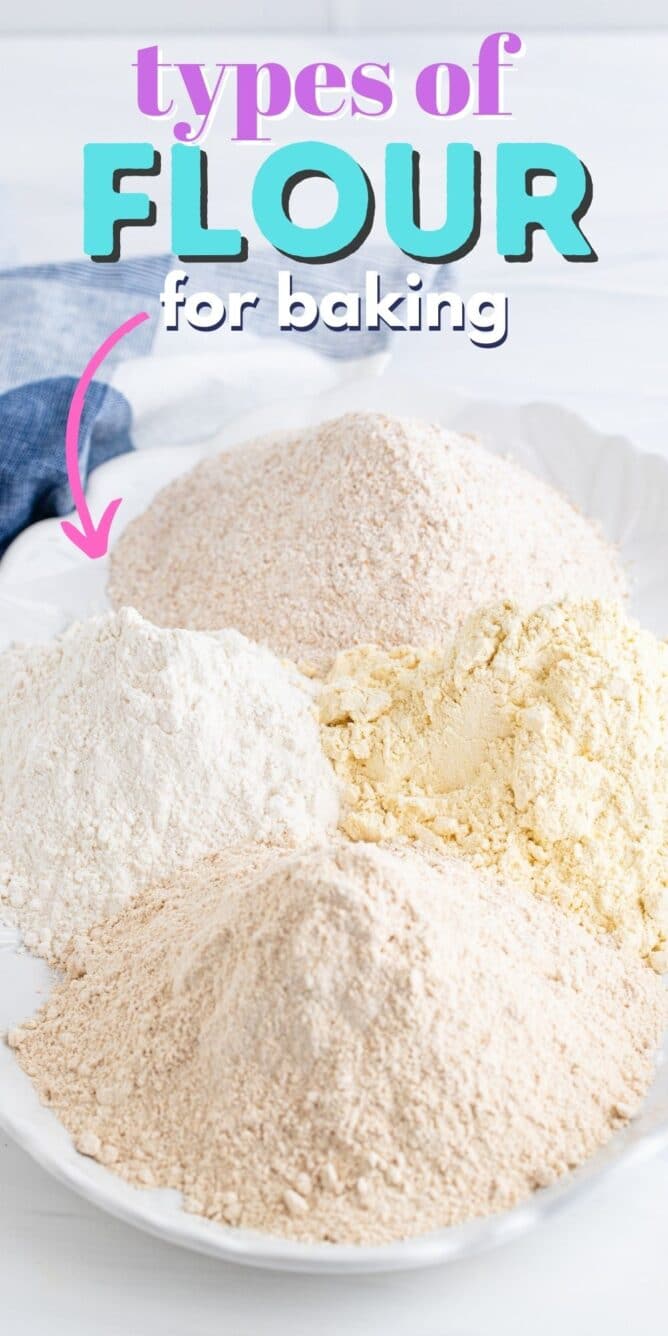
In this post, I’ve covering six common types of baking flour, what they’re used for, and how you can substitute them in recipes.
